There is little doubt that telemark bindings are going to go through a bit of turmoil for a few years. Keep in mind what I’m referring to is not the established technology for boots and bindings using the 75mm norm, but NTN, the new telemark norm.

The latest addition to the NTN family, Rottefella’s Freedom binding.
Backcountry favors a free-pivot
From a backcountry perspective it seems clear that the TTS is the closest thing to final form for telemark systems for the long haul. In its infancy it offers the key attributes of superb touring and plenty of downhill control in a package light enough to make telemark Torries have second thoughts about locking their heels. It is not unrealistic to imagine a complete system including the option to switch between locked or yoked heels with a bit more development and refinement. In our dreams it will even offer a safety release, and one could argue it already has this, but not reliably. One must also point out that, strictly speaking it is not an NTN compatible binding since it does not latch onto the 2nd heel of the NTN sole. However, except for Scarpa’s F1, the only boots with a tele bellows and tech fittings are NTN boots.
NTN favors Convenience & Power
Hybrid options
Unfortunately, at this stage in the game TTS is on the bleeding edge of development so it is not without a few flaws. Chief among them are springs without enough travel to allow for a full knee-to-ski telemark turn, especially with big boots. While it can be argued this isn’t necessary if you have good form, even good telemark skiers with a tall stance occasionally take a fall. As history has proven, when the springs limit out, bindings separate from skis or break.
A more likely result, however, is the solid cable bars may bend, not from the stress of springs limiting out, but because the cable bars press against the NTN sole and bend around the second heel. This is not typical for the center cable position on the TTS v2.0 binding, but is common if the cable is mounted on the forward, least active position. Even the bending of the cable bar is acceptable for the standard sized cable bar, but that only works for boots 27 (mondo size) or larger. For smaller boots, the forward position requires a smaller cable bar, with a bend resulting in the threaded section. I haven’t broken mine yet, but over time it seems inevitable. Hopefully a braided cable version is in the near future. For some this is reason enough to avoid the system, but the option of having adjustable power on par with Rottefella’s NTN Freeride, or 22 Designs Axl, Hammerhead, or Vice with the touring weight and efficiency of Dynafit is hard to ignore. The proof of the appeal is how many folks have taken things into their own hands and come up with their own DIY TTS bindings. While crude in appearance, there have been some good ideas put forth that, in time, will inevitably be incorporated.Decisions, Decisions
For the average user, this means that telemark systems using NTN boots aren’t quite ready for prime time. On that I must concur, but it is close enough that those who are itching to get beyond the limits imposed by the 75mm norm the options that exist are acceptable, even superior with a few generic caveats.
There is the simple consideration that going NTN means replacing boots and bindings at a cost in the neighborhood of a C-note. You might get away with less, but not by much.
Is Bigger Better?
There are other considerations. Do you go with a NTN specific binding from Rottefella, either the Freedom or the Freeride, or a hybrid, TTS or NT Spike? The benefit of going with Rottefella is they are a big company (within the context of the telemark market) and have gone on record as being committed to the longevity and growth of the sport, and even making the point at their official introduction of the Freedom binding they have the resources and willpower to do so. The hybrid NTN bindings are from small guys.
Weighing the Features
However, beyond that it still boils down to features. If most of your days on snow are in-bounds, Rottefella’s options make sense. The more aggressively you ski, and the more time you spend in-bounds, the more the Freeride makes sense. The more you venture out-of-bounds, the more the Freedom makes sense. If you spend the majority of your time in the backcountry, the hybrids make more sense, either TTS or Spike NT Tour.
Consider the Turn
Then there is the matter of downhill technique. There will be some adjustment in technique required whether you are using a true NTN binding that grabs your boot at the second heel, or a hybrid NTN binding that latches at the heel, like TTS or Burnt Mountains NT Spike. Of the four options, the NT Spike and Rottefella’s Freedom will ski most like a 75mm binding, while TTS and Rottefella’s Freeride work best when you weight both skis simultaneously when transitioning between turns.
Weighing the Options
There are other considerations, but none insurmountable as long as there is enough interest to fund further development. For the manufacturers it may seem like I’m emphasizing the negative over the positive. Indeed I am, not to scare people aware but to be blunt honest about the status of the new telemark norm. There are plenty of positive reasons to make the switch now, but it is not yet a clearly superior system. The ability to get in and out of NTN bindings without bending over, or having a safety release are unquestionably superior. If all the positive features – “step-in” convenience, plenty of power (user defined), a frictionless free-pivot for touring and light weight could be combined in one binding with more boots to chose from, the switch from 75mm to NTN would be a done deal.
For the moment we must figure out our priorities and chose accordingly. If safety release, convenient entry and exit from the binding and excellent downhill control are at the top of your list, the Freeride is a good option with inferior but acceptable touring performance. If you don’t need turbo power for turns, with good touring, though not a true free-pivot, Rottefella’s Freedom is the way to go. If you want step-in convenience, don’t need safety release, with solid control and excellent touring, look at NT Spike. If you want Dynafit caliber touring performance and Hammerhead power with catastrophic release capability, TTS is your rig.
If you love your current 75mm boots stick with 75mm options like O1, Axl, Enzo, RT Spike, Switchback or the X2 version, and if you must have a safety release, 7tm Power Tour.
My alpine friends are always quick to point out that if we would just fix the heel we could fix the problems, but telemark is not about fixing the heel but freeing it and therein lies both the rub and the appeal.
© 2012

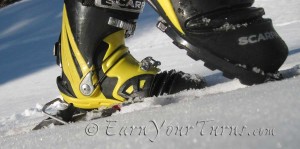
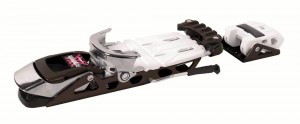
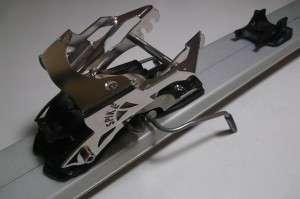
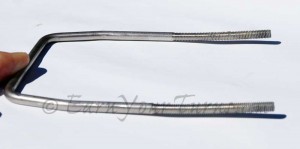
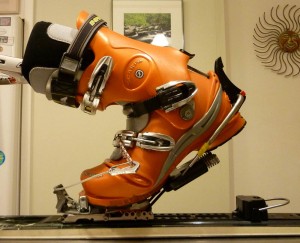
15 pings
Skip to comment form
[…] heel post so it is less likely to become unhooked when touring. At this point my preference is for TTS over NTN in-bounds or out. What’s next? Next gen Mantis TTS with steel reinforcement.Since the original […]